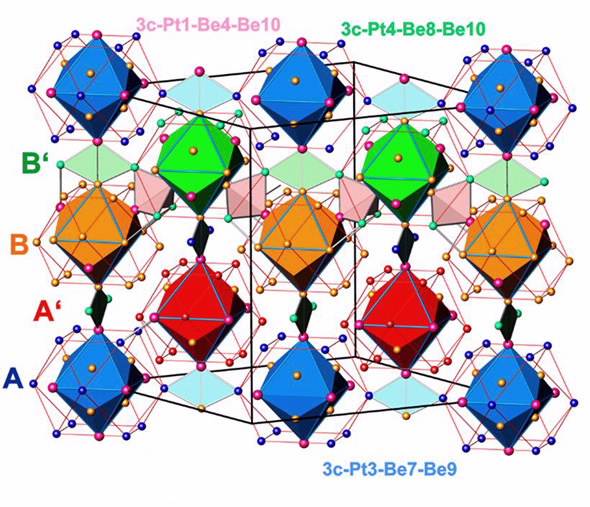
Nuclear techniques have played an important role in determining the crystal structure of a rare type of intermetallic alloy that exhibits superconductivity.
The research, which was recently published in the Accounts of Chemical Research, was a undertaking led by researchers from the Max Planck Institute for Chemical Physics of Solids, with the collaboration of the Ivan-Franko National University of Lviv, the Technical University Freiberg, the Helmholtz-Zentrum Dresden-Rossendorf, and ANSTO.
Complex metallic alloys (CMAs) have the potential to act as catalysts and serve as materials for devices that covert heat into energy (thermoelectric generators) or use magnetic refrigeration to improve the energy efficiency of cooling and temperature control systems.
Thermoelectric generators are used for low power remote applications or where bulkier but more efficient heat engines would not be possible.
The unique properties of CMAs stem from their intricate superstructure, with each repeating unit cell comprising hundreds or thousands of atoms.
The study focused on a phase of beryllium and platinum, Be21Pt5. The low X-ray scattering power of beryllium atoms had previously posed a barrier to researchers attempting to resolve the structure of beryllium-rich CMAs, such as Be21Pt5, by using X-ray powder diffraction techniques.
To locate the beryllium atoms, researchers used the ECHIDNA neutron powder diffractometer at the Australian Centre for Neutron Scattering.
Dr Maxim Avdeev, an instrument scientist, noted that the use of neutron beams in combination with X-ray data was key to solving the structure.
“Since beryllium is a light element, it scatters X-rays weakly. Compared to platinum, the contrast is about 1-to-20. Using neutrons changes the ratio to approximately 16-to-20 which allowed to find beryllium atoms in the crystal structure easily.”
Data from X-ray and neutron powder diffraction was complemented with quantum mechanical calculations to determine electron density distribution which defines electronic properties of the material.
The diffraction data indicated that the crystal structure of Be21Pt5 was built up from four types of nested polyhedral units or clusters. Each cluster contained four shells comprising 26 atoms with a unique distribution of defects, places where an atom is missing or irregularly placed in the lattice structure.
Neutron diffraction experiments at ANSTO helped determine the crystal structure determine the structure of Be21Pt5, which consisted of four unique clusters (colour-coded above in image), each containing 26 atoms.
The collaborative nature of the study was also pivotal to solving the structure.
“The physical sample was synthesised in Germany and sent to Australia for analysis. Once we sent the diffraction data back to our collaborators, they were able to solve the structure at their home institutions.”
Having resolved the crystal structure, the research team also turned their attention to the physical properties of Be21Pt5 and made an unexpected discovery. At temperatures below 2 K, Be21Pt5 was found to exhibit superconductivity.
“It’s quite unusual case for this family of intermetallic compounds to undergo a superconducting phase. Further studies are necessary to understand what makes this system special and neutron scattering experiments will play an important role in the process.”
DOI: Cluster Formation in the Superconducting Complex Intermetallic Compound Be21Pt5
Published: 18/04/2018


